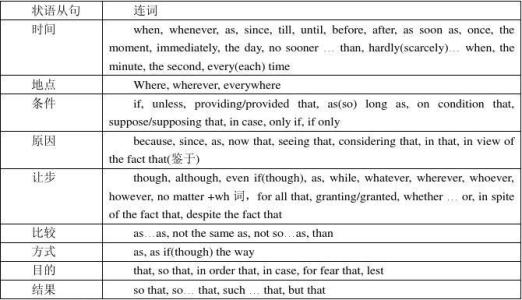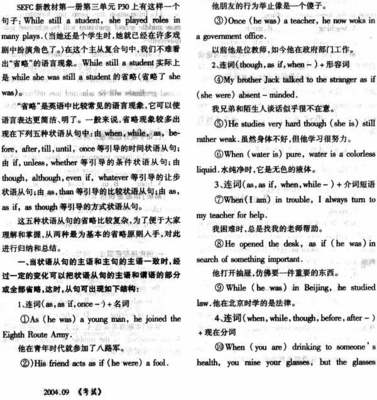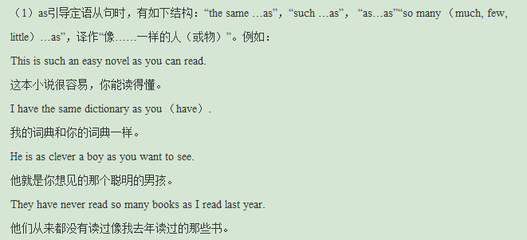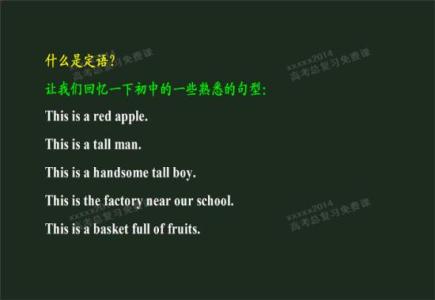状语从句的两手绝活——时态的呼应和从句的位置。请看:
第一点
时态呼应一般来讲,复合句都要遵循主、从句时态呼应规律,状语从句也不例外。即主句用现在时,从句也用现在时;主句用过去时,从句也用过去的某种时态。如:
Be careful when you cross the road.过马路时要小心。
You must see the doctor if you are ill.如果你生病了,你必须去看医生。
主句是一般过去时,从句也要用一般过去时。如:
When he was seven years old, he could swim.当他七岁时就会游泳。
She turned off the light before she left the office.她离开办公室前就关了灯。
第二点
主从句的位置,大多数情况下,从句可以位于主句之前,也可以位于主句之后。不过从句在前时,主从句之间必须用逗号隔开。如:
Please tell me when he comes back. = When he comes back, please tell me.
这是一般现在,一般过去,现在进行,过去进行,现在完成,过去完成,现在完成进行,一般将来,过去将来时的时间状语:
1.Often,usually----------动词原型do,does,am,is, are
2.yesterday,last Sunday,in the past-------动词过去式did,was,were

3.now--------be+doing
4.while,at that time,-------was doing,were doing
5.since从句,for 2 days,------have done,have been
+过去的某个时间点----had done,had been
7.与现在完成相似-------have been+持续动词ing形式
8.一切表示将来的时间状语,in+一段时间-------将来要发生的一般性动作,
will,shall+原型
9.与一般将来时相似-----------would+原型
时间状语
一般现在时every…, sometimes, at …, on Sunday,
一般过去时yesterday, last week, an hour ago, the other day, in 1982, just now
一般将来时next…, tomorrow, in+时间,
现在完成时 for, since, so far, ever, never, just, yet, till/until, up to now, in past years, always, recently
过去完成时before, by, until, when, after, once, as soon as
过去进行时this morning, the whole morning, all day, yesterday, from nine to ten last evening… when, while
将来进行时soon, tomorrow, this evening, on Sunday, by this time, tomorrow, in two days, tomorrow evening
看过“如何使用时间状语从句”的人还看了:
 爱华网
爱华网



